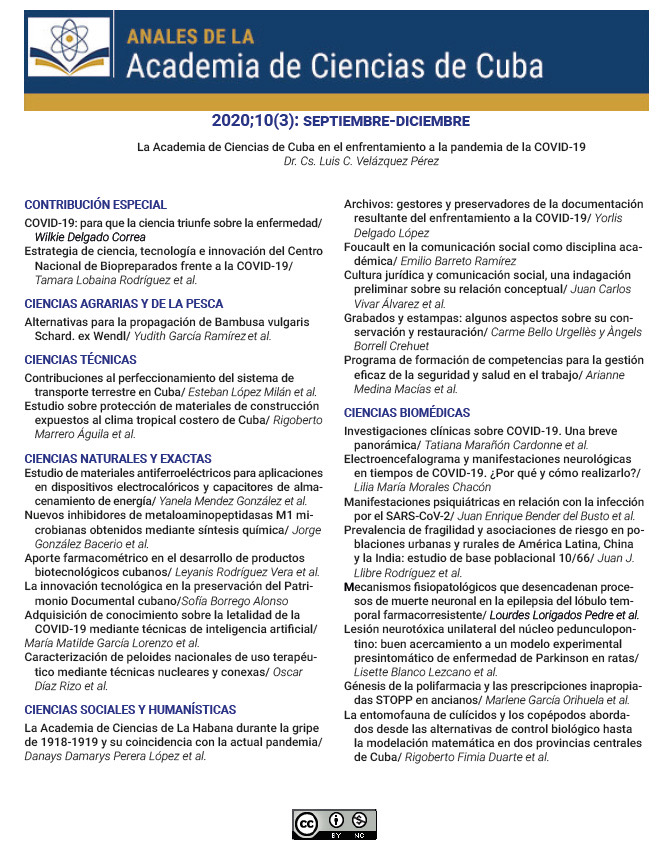New inhibitors of microbial M1 metallo-aminopeptidases obtained by chemical synthesis
Keywords:
antibacterial and antimalarial agents, microbial M1 aminopeptidases, synthetic aminopeptidase inhibitors, Ugi-multicomponent reactionAbstract
Introduction. Infections by bacteria resistant to conventional antibiotics are a worldwide health problem. Likewise, the parasite causal agent of malaria, main tropical parasitic disease, has developed resistance to the traditional drugs. In this sense, aminopeptidasese PepN, from the bacterium Escherichia coli, and PfA-M1, from the Plasmodium falciparum parasite, are new targets in these sicknesses. The objective of this work was the identification of synthetic inhibitors of ePepN and PfA-M1, with potentialities as antibacterial and antimalarial agents.Methods. Using two multicomponent Ugi-reactions, two libraries of 33 bestatin- and actinonin-based peptidomimetics were synthesized and evaluated against PfA-M1. In addition, 22 tetrazole-peptidomimetics were synthesized and evaluated against ePepN.
Results. Three tetrazoles (YTE003, YTE007, YTE008) were identified as potent and selective ePepN inhibitors, regarding porcine M1 aminopeptidase (pAPN). YTE003 shows in vitro antibacterial activity, which supports its potential as leader compound in the field of antibacterial agents. Toward PfA-M1, compound KBE009 was identified as a potent inhibitor, with in vitro antimalarial activity, that does not inhibit pAPN at concentrations of therapeutic relevance, and it is not cytotoxic up to 200 μmol/L against the human HUVEC cell line. It was found that KBE009 inhibits AP activity in the whole and isolated parasite in the same order of magnitude as its in vitro antimalarial activity. These properties lead into considering the peptidomimetic a promising molecule as a lead compound against malaria.
Downloads
Published
How to Cite
Issue
Section
License
The journal Anales de la Academia de Ciencias de Cuba protects copyright, and operates with a Creative Commons License 4.0 (Creative Commons Attribution-NonCommercial License 4.0). By publishing in it, authors allow themselves to copy, reproduce, distribute, publicly communicate their work and generate derivative works, as long as the original author is cited and acknowledged. They do not allow, however, the use of the original work for commercial or lucrative purposes.
The authors authorize the publication of their writings, retaining the authorship rights, and assigning and transferring to the magazine all the rights protected by the intellectual property laws that govern in Cuba, which imply editing to disseminate the work.
Authors may establish additional agreements for the non-exclusive distribution of the version of the work published in the journal (for example, placing it in an institutional repository or publishing it in a book), with recognition of having been first published in this journal.
To learn more, see https://creativecommons.org






